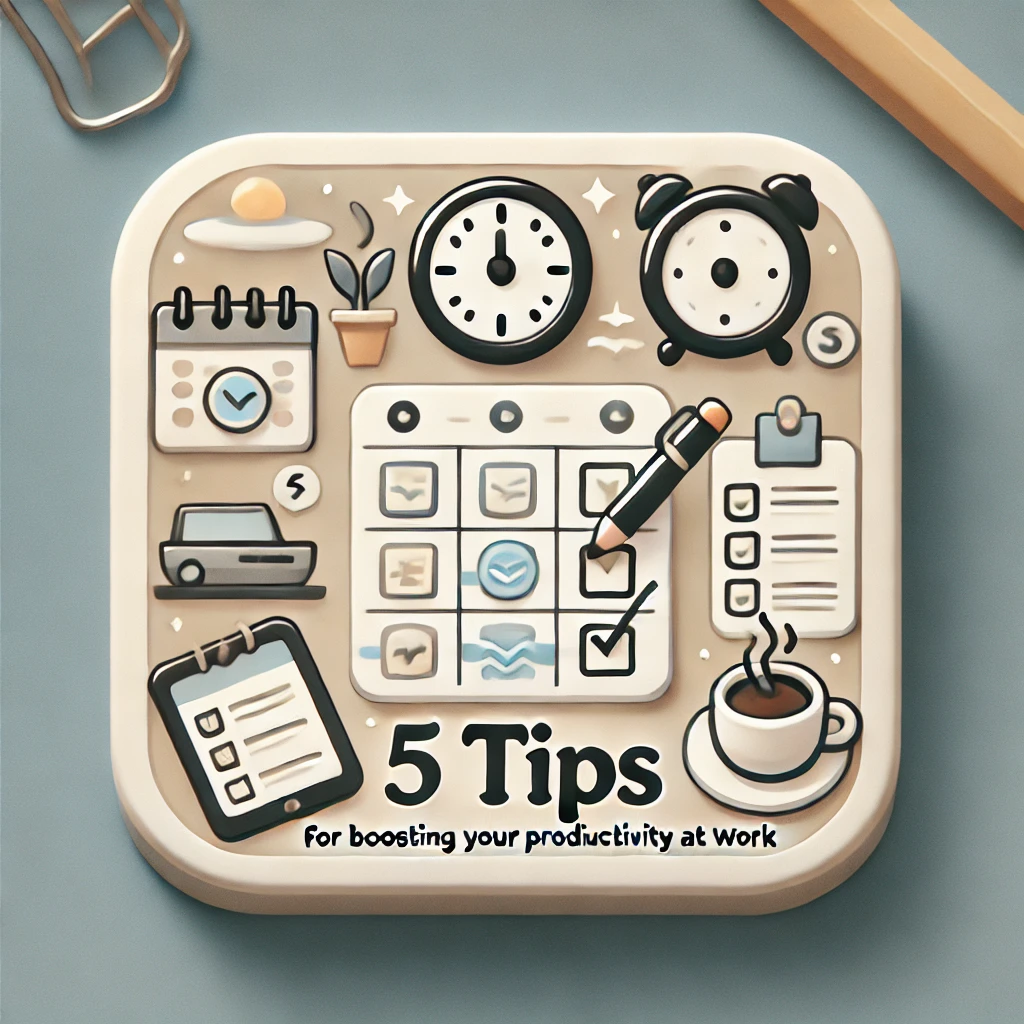
Mastering Productivity: Success Strategies Successful time management is essential in today’s fast-paced world to meet both personal & professional objectives. Gaining proficiency in productivity can greatly improve your performance & general satisfaction, regardless of your status as a professional, student, or business owner. This article will examine a number of time and effort optimization techniques that will help you stay motivated and successful in all of your pursuits.
The foundation of efficient time management is goal-setting. A roadmap that directs your actions & decisions is created when you specify your goals. Objectives ought to be SMART—specific, measurable, achievable, relevant, and time-bound. For example, rather than stating, “I want to get fit,” a SMART goal would be, “I will work out five times a week for 30 minutes for the next three months.”.
This clarity not only keeps you on task, but it also enables you to monitor your progress and make any necessary corrections as you go. Setting goals as your top priority is equally crucial. Determining which objectives are most important is crucial after you have decided what you hope to accomplish.
There are a number of ways to accomplish this, including the Eisenhower Matrix, which groups tasks according to their significance & urgency. Prioritizing high-priority tasks first guarantees that your resources & energy are allocated to the things that really count. This methodical approach reduces the possibility of feeling overburdened and keeps you motivated as you witness the results of your hard work.
Being able to avoid distractions is essential for sustaining productivity in this day and age. Email alerts, social media notifications, and even a disorganized workstation can all be distractions. Consider employing techniques like disabling device notifications or utilizing apps made to block distracting websites while at work to counteract these disruptions. You can greatly improve your capacity to focus on the current task by establishing a focused environment. Also, it’s critical to identify the internal distractions that may cause you to lose focus.
These could be rambling thoughts or anxiety related to incomplete tasks. Meditation & deep breathing exercises are examples of mindfulness practices that can help you focus your thoughts and lower your stress levels. You can establish a mental environment that supports productivity by developing a mindset that values presence and concentration.
Finally, reducing internal and external distractions enables you to focus entirely on your work, producing better results and increased satisfaction. Despite its apparent paradox, taking regular breaks is essential to sustaining long-term productivity. Studies have indicated that prolonged work without breaks can result in burnout and reduced productivity.
One well-liked technique that encourages people to work for 25 minutes & then take a 5-minute break is the Pomodoro Technique. This methodical approach offers regular breaks for mental renewal in addition to aiding with focus maintenance. It’s crucial to take part in activities that actually revitalize your body and mind during breaks. Instead of checking emails or browsing social media, think about stretching, going outside for some fresh air, or engaging in mindfulness exercises.
You can refuel and clear your head by engaging in these activities. You can increase your general productivity & creativity while lowering your risk of fatigue by implementing regular breaks into your work schedule. Tasks and projects can be approached differently if you use efficient time management strategies. Time blocking is a popular technique that involves setting aside specified time slots for various tasks throughout the day.
This method not only assists you in planning your day, but it also promotes accountability as you make a commitment to finish tasks by the deadline. This kind of day planning will help you avoid putting off important tasks and make sure they get the time & attention they need. The two-minute rule, which states that you should finish a task right away rather than putting it off if it can be finished in two minutes or less, is another useful strategy. This straightforward idea can help keep little chores from piling up & becoming too much to handle. You can develop a more structured approach to work that optimizes productivity & reduces stress by incorporating these time management strategies into your everyday routine.
Particularly in group contexts, delegation is an effective strategy for increasing productivity. Many people find it difficult to delegate because they are worried about control or quality, but when done well, delegation can benefit all parties. Determine which tasks can be delegated to others first, such as administrative responsibilities or particular project elements, and then assign them to team members whose qualifications match those tasks.
You can then devote more of your valuable time to higher-level tasks that call for your expertise. Also, trust and transparent communication are essential for efficient delegation. Give thorough instructions and establish expectations for deadlines & quality standards when delegating work. Maintaining a sense of ownership among team members while keeping projects on schedule requires regular check-ins without micromanaging.
Delegation is a strategic approach to workload management that not only increases productivity but also gives others the ability to make significant contributions to common objectives. How productive you are at work is greatly influenced by the physical surroundings. A messy or disorganized workstation can cause distractions and make it difficult to concentrate. Declutter your desk and arrange necessary supplies in a convenient location to begin creating the best possible workspace.
Think about making an investment in ergonomic furniture, such as standing desks that encourage movement throughout the day or adjustable chairs that enhance comfort during extended workdays. You should also think about the atmosphere in your office. Variables like temperature, lighting, and noise levels can significantly affect your ability to focus. Since natural light is known to improve mood and productivity, try to place your desk next to a window or use full-spectrum light bulbs that simulate daylight.
Also, adding personal touches or plants can improve the ambiance and make it feel cozier. By making your workspace better, you can create an atmosphere that encourages creativity and concentration, which will eventually boost output. Maintaining organization is essential for efficient time management & increased output.
Important documents can be easily found with a well-organized system, which also lessens the mental clutter that comes with disarray. Start by putting in place digital tools that make it simple to access files from any location, like project management software or cloud storage options. Also, to effectively prioritize tasks, use calendars or planners to keep track of appointments and deadlines. Physical organization is just as important; create a filing system that logically classifies information for both paper and digital documents. To keep things organized, go over and remove anything superfluous from your workspace on a regular basis. A streamlined workflow that increases productivity & lessens the stress of looking for lost items is produced by developing an orderly approach to both digital & physical materials.
Creating a regular schedule is one of the best strategies to gradually increase productivity. Your daily activities become predictable with a well-organized routine, which helps you manage your time wisely for different tasks & reduces decision fatigue. Start by determining the essential activities that must be included in your daily routine; these could include work-related duties, physical activity, meals, & downtime. Then, develop a framework that harmoniously balances these components. Also, think about adding customs to your daily schedule that indicate the start or finish of workdays.
Setting the tone for future productivity can be achieved, for instance, by reviewing your goals or doing a quick meditation at the beginning of each day. In a similar vein, developing a daily routine that involves reviewing your achievements or making plans for the following day can help you come to terms with your day & get mentally ready for the challenges that lie ahead. You can create habits that support long-term productivity and improve general well-being by creating a routine that suits your requirements and preferences.
To sum up, achieving productivity demands a multidimensional strategy that includes goal-setting, removing distractions, taking regular breaks, using efficient time management techniques, learning how to delegate, improving the environment, organizing tactics, and routine development among other things. You can maximize your time and effort while attaining greater fulfillment in your personal & professional endeavors by incorporating these strategies into your daily life. Adopt these guidelines as successful strategies for achieving greater fulfillment and productivity.

